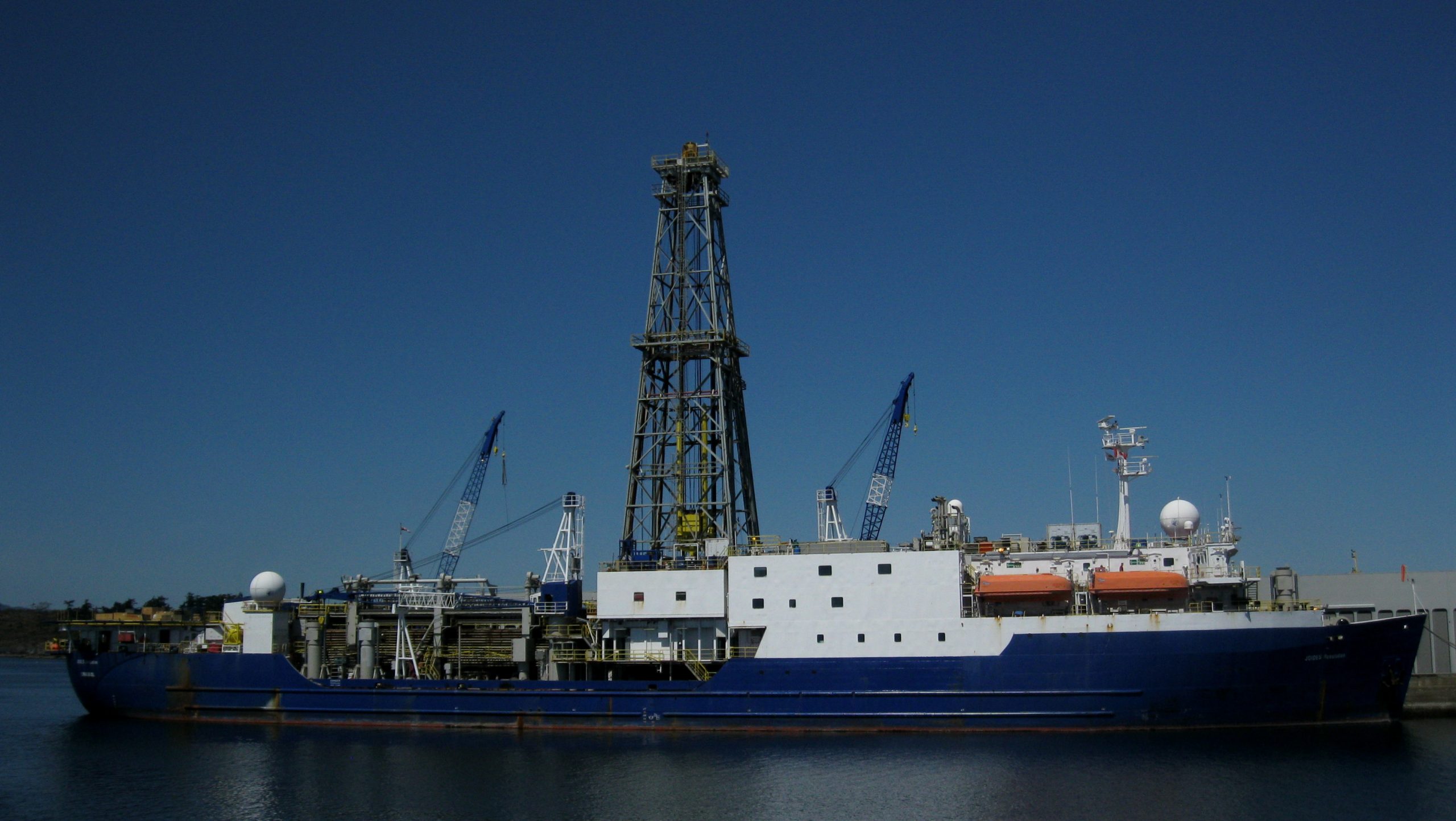Sarah Lambart, assistant professor of geology and geophysics, has been invited to sail as a petrologist on the next expedition of the International Ocean Discovery Program (IODP). The world-famous research vessel JOIDES Resolution (JR) will leave the port of Reykjavik, Iceland on August 6th and sail for two full months on the coast of Norway. During the expedition, the team will drill rock cores in the ocean floor along the continental margin. As part of the Core Description Lab, Lambart will be responsible for describing the textures and mineralogical assemblages of the collected igneous rocks.
Because of COVID restrictions, the ship will only sail with a partial science party. Lambart and the other members of the sailing team will communicate progress and observations with the onshore team on a daily basis.

The mission explores a geological anomaly associated with the breakup of North America and Europe and the formation of the North Atlantic Ocean, beginning in the early Cenozoic era. The North Atlantic break-up event generated a volume of magma that is too high to be explained by the type of volcanic activity that occurs along the Mid-Atlantic ridge today. Three different hypotheses exist to explain this excess magma: 1) elevated temperatures in the mantle associated with a rising plume of material, 2) small-scale movement of material due to convection at the base of the lithosphere, and 3) variation in the composition of the mantle. While all three hypotheses could play a role in the break-up event, the relative importance of each mechanisms remains unresolved.
After the expedition, Lambart and the members of the MagMaX lab at the University of Utah will study the collected rocks, in particular the large mineral grains that can record information about the temperature and variability of the mantle source and will be used to discriminate between the different hypotheses.
Learn more about the expedition here and follow the cruise on Twitter at @TheJR or on Instagram at @JOIDES_resolution.

